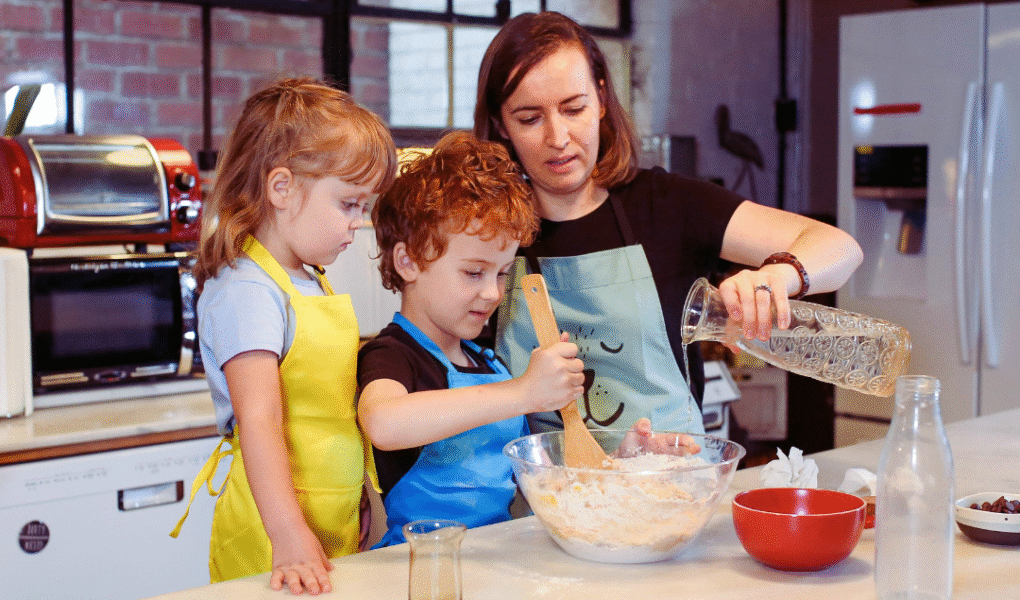Getting children involved in cooking dinner can be a rewarding experience for the whole family. Engaging kids in the kitchen not only teaches them valuable culinary skills but also fosters family bonding and encourages healthy eating habits. By giving them responsibilities tailored to their age and skills, parents can create an environment where children feel empowered and excited about preparing meals.
Involving children in meal preparation can be as simple as allowing them to choose vegetables for a stir-fry or having them mix ingredients for a salad. It is essential to encourage creativity and make the process fun, whether through cooking-themed nights or experimenting with recipes. This approach not only builds confidence in the kitchen but also instills a sense of accomplishment.
To start, parents can leverage age-appropriate tasks that spark curiosity and engagement. Tasks like washing produce, setting the table, or measuring ingredients can be both educational and enjoyable. When children see their efforts contribute to the family meal, they are more likely to develop a lifelong appreciation for cooking.
Benefits Of Cooking Dinner With Your Children
Involving children in cooking dinner offers numerous advantages. Not only does it create opportunities for family bonding, but it also instills positive eating habits and nurtures confidence among young ones.
Strengthening Family Bonds
Cooking together fosters communication and teamwork. When parents include their children in meal preparation, it allows for shared experiences. Tasks such as chopping vegetables or mixing ingredients naturally generate conversations and laughter, reinforcing connections.
Moreover, children learn about family traditions through cooking. Recipes passed down from generations can be integrated into meal preparation, linking family history with present activities. This collaborative effort cultivates a sense of belonging and shared purpose within the home.
Encouraging Healthy Eating Habits
Engaging children in cooking dinner promotes awareness of nutrition. When they’re involved in selecting ingredients, they often become more curious about food options. Measuring, chopping, and mixing ingredients provides them with a hands-on understanding of healthy cooking practices.
Additionally, children are more likely to try new foods when they’ve had a role in making the meal. This increased exposure fosters a more adventurous palate. Cooking with kids helps them to establish lifelong healthy eating habits, leading to better overall health.
Building Confidence And Independence
Cooking empowers children by developing their skills in the kitchen. Learning to follow recipes, measure ingredients accurately, and execute cooking techniques builds their confidence.
As they complete tasks successfully, they gain a sense of accomplishment. This independence is crucial as it encourages them to make food choices and prepare meals later in life.
By mastering cooking basics, children also feel more equipped to contribute to family meals, further boosting their self-esteem.
Getting Started: Planning And Preparing Together
Engaging children in the dinner preparation process can be both rewarding and educational. This includes creating a shopping list, assigning tasks suited to their age, ensuring a safe kitchen environment, and teaching them essential measuring skills.
Involving Kids In Creating A Shopping List
Creating a shopping list is a practical first step. Parents can encourage children to suggest their favorite meals to cook together. Listing ingredients encourages them to think about what is needed.
To make this activity interactive, parents can use a whiteboard or paper. Here’s a simple process:
- Meal Suggestions: Have children write down three meals they enjoy.
- Ingredient Breakdown: Help them identify the ingredients required for each meal.
- Shopping List Creation: Combine the items into one comprehensive list to take to the store.
This activity not only teaches kids about meal planning but also reinforces their literacy and math skills.
Choosing Age-Appropriate Tasks
Assigning tasks based on age ensures that kids can contribute meaningfully without feeling overwhelmed. Younger children can handle simpler, safer tasks, while older kids can take on more complex responsibilities.
Here are suggested tasks categorized by age group:
- Ages 2-5: Washing vegetables, tearing lettuce, stirring ingredients.
- Ages 6-8: Measuring ingredients, assembling sandwiches, setting the table.
- Ages 9-12: Chopping soft fruits or vegetables, following a recipe, cooking pasta.
By matching tasks to their capabilities, parents can build confidence and foster a sense of achievement in children.
Setting Up A Safe And Fun Kitchen Environment
Safety in the kitchen is paramount. Creating a comfortable workspace will not only ensure security but also make cooking enjoyable.
Consider these points:
- Clear Counter Space: Keep the workspace clutter-free to prevent accidents.
- Accessible Utensils: Provide tools that are safe and easy for children to use, such as plastic knives for cutting soft items.
- Comfortable Footwear: Encourage kids to wear closed-toe shoes to protect their feet.
Incorporate bright colors or fun utensils to make the environment inviting, enhancing their overall experience.
Teaching Kids To Measure Ingredients
Measuring ingredients is a fundamental skill in cooking. It introduces children to math concepts while enhancing their ability to follow instructions.
Introduce measuring through engaging activities:
- Use Clear Tools: Provide measuring cups and spoons with easy-to-read markings.
- Hands-On Practice: Let children pour flour or measure out spices. This tactile experience helps reinforce their understanding.
- Compare Measurements: Discuss differences between cups, tablespoons, and teaspoons. Relating measurements to real objects can make learning more relatable.
Emphasizing the importance of accuracy in measurement can foster a sense of responsibility and precision in young cooks.
Tips And Strategies For Engaging Children In Dinner Preparation
Engaging children in dinner preparation can transform mealtime into a fun and valuable learning experience. By incorporating educational aspects and encouraging creativity, parents can foster a positive cooking environment. Strategies to address common challenges, such as working with picky eaters, are also essential.
Making Cooking Fun And Educational
Incorporating fun into cooking makes the process enjoyable for children. Parents can start by choosing recipes that allow children to participate actively. Gathering ingredients and cooking tools can become a mini-adventure.
Using cooking to teach basic math and science concepts enhances the experience. For instance, measuring ingredients introduces fractions, and understanding heat impacts cooking times. Parents can turn meal prep into a learning moment by discussing where ingredients come from, assisting children’s connection to food.
Activities like creating themed dinners or celebrating cultural dishes foster excitement. Engaging in storytime related to the meal encourages anticipation. Children will look forward to helping, and the educational aspect enhances their culinary skills.
Encouraging Creativity And Decision-Making
Inviting children to help with meal planning cultivates a sense of ownership. Parents can create a list of potential dishes and allow children to choose which ones to prepare. This fosters decision-making skills and encourages them to try new foods.
Presenting various ingredients and asking children how they might use them in a dish promotes creativity. For example, they might suggest adding fruits to salads or mixing flavors in sauces. This encourages experimentation with flavors and textures.
Parents can introduce themed nights, such as pasta or taco bars, where children assemble their meals. This fosters creativity and lets them utilize their preferred ingredients. Allowing children to decorate their plates adds an element of fun and personal expression.
Overcoming Challenges With Picky Eaters
Working with picky eaters can be challenging, but involving them in meal preparation may help. Parents should encourage children to select ingredients they enjoy and discuss why they like them. This conversation helps children feel empowered in their food choices.
Introducing small amounts of new ingredients alongside familiar favorites can also ease resistance. Gradually incorporating these items can encourage tasting without overwhelming the child.
Cooking together gives parents opportunities to explain the benefits of diverse foods. Using engaging presentations, such as colorful fruit platters or fun shapes, can make new foods more appealing. Patience and encouragement are key when dealing with picky eaters, as they often need time to adjust to new tastes and textures.




